Free AP English Language and Composition Practice Test
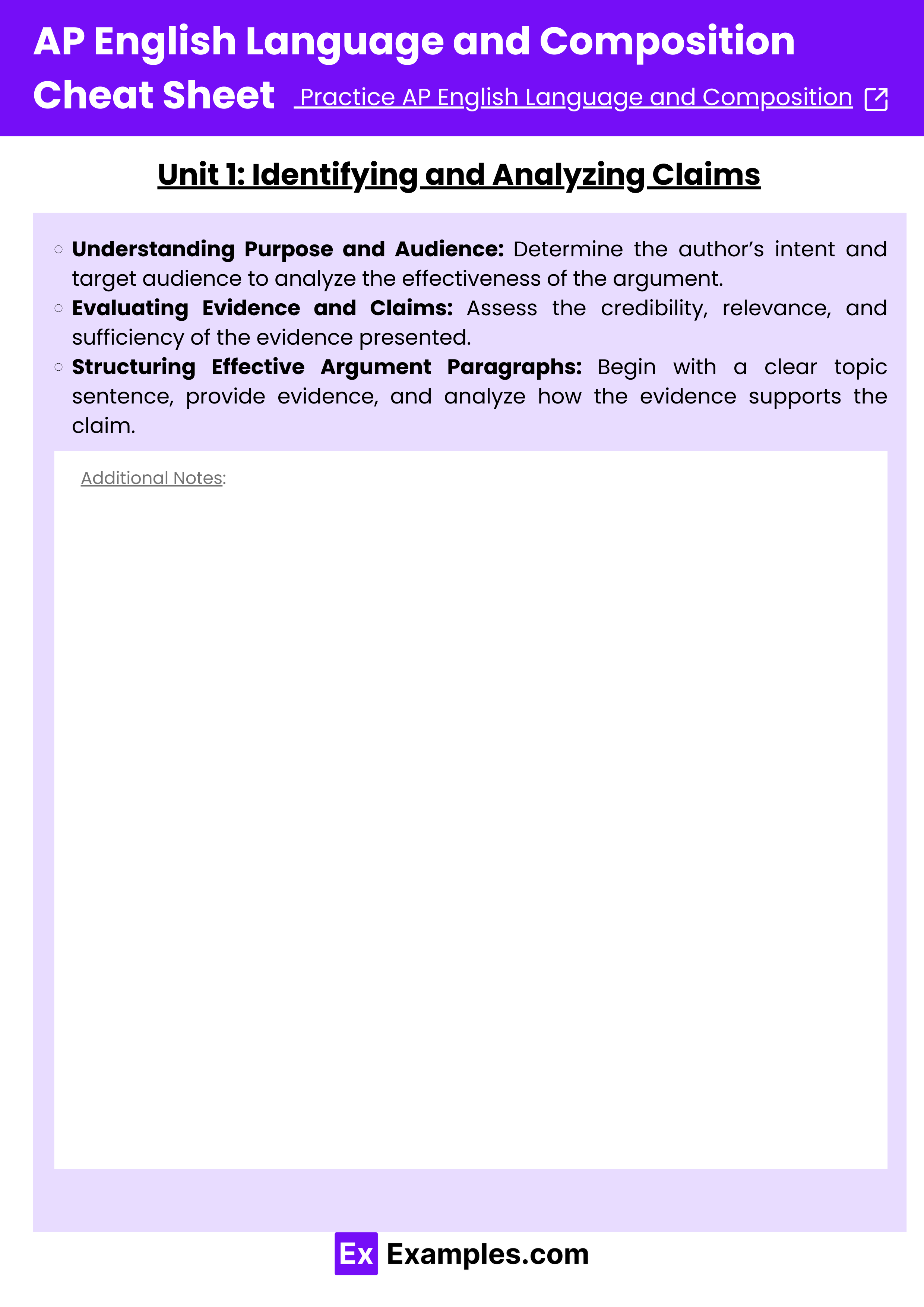

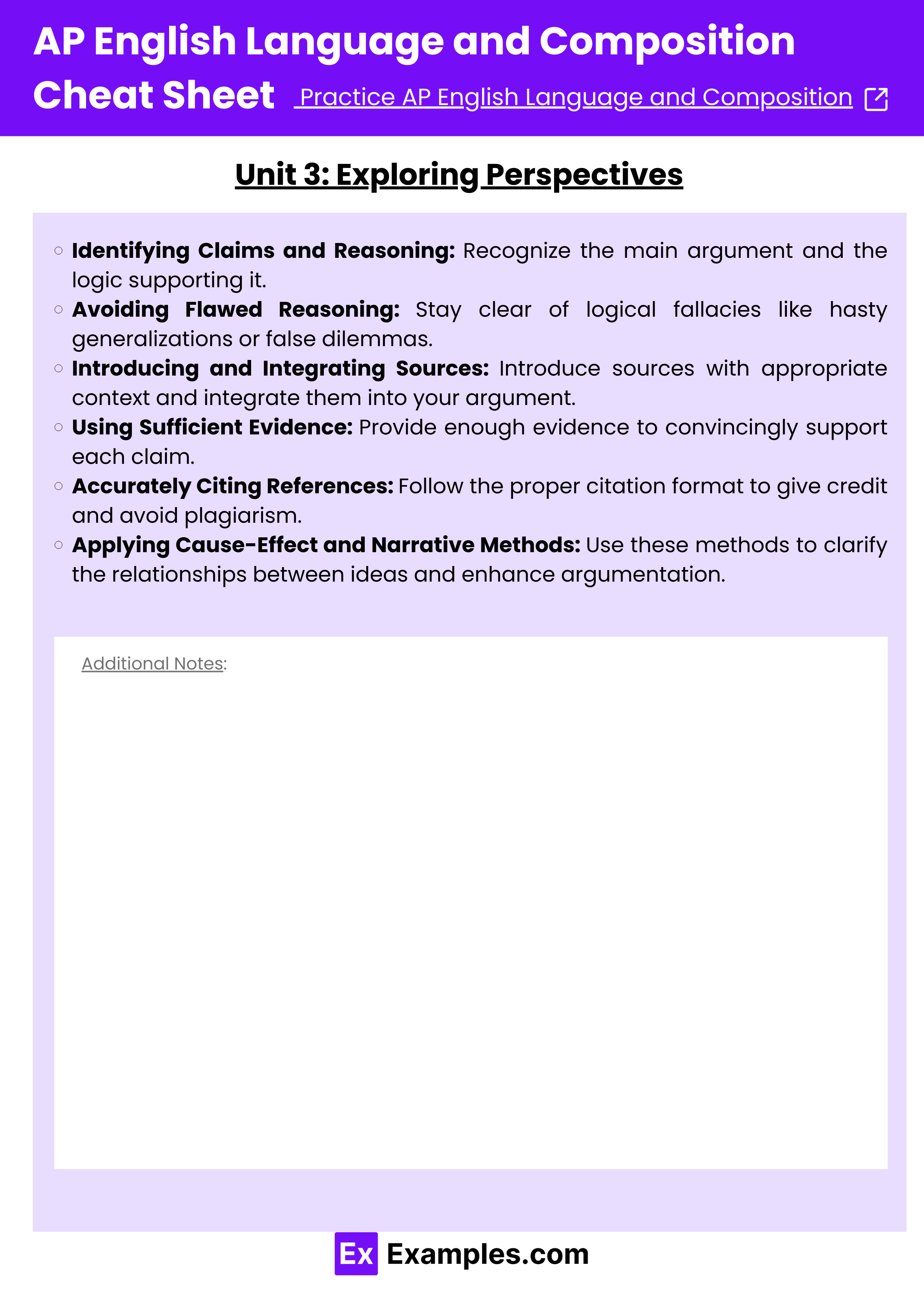
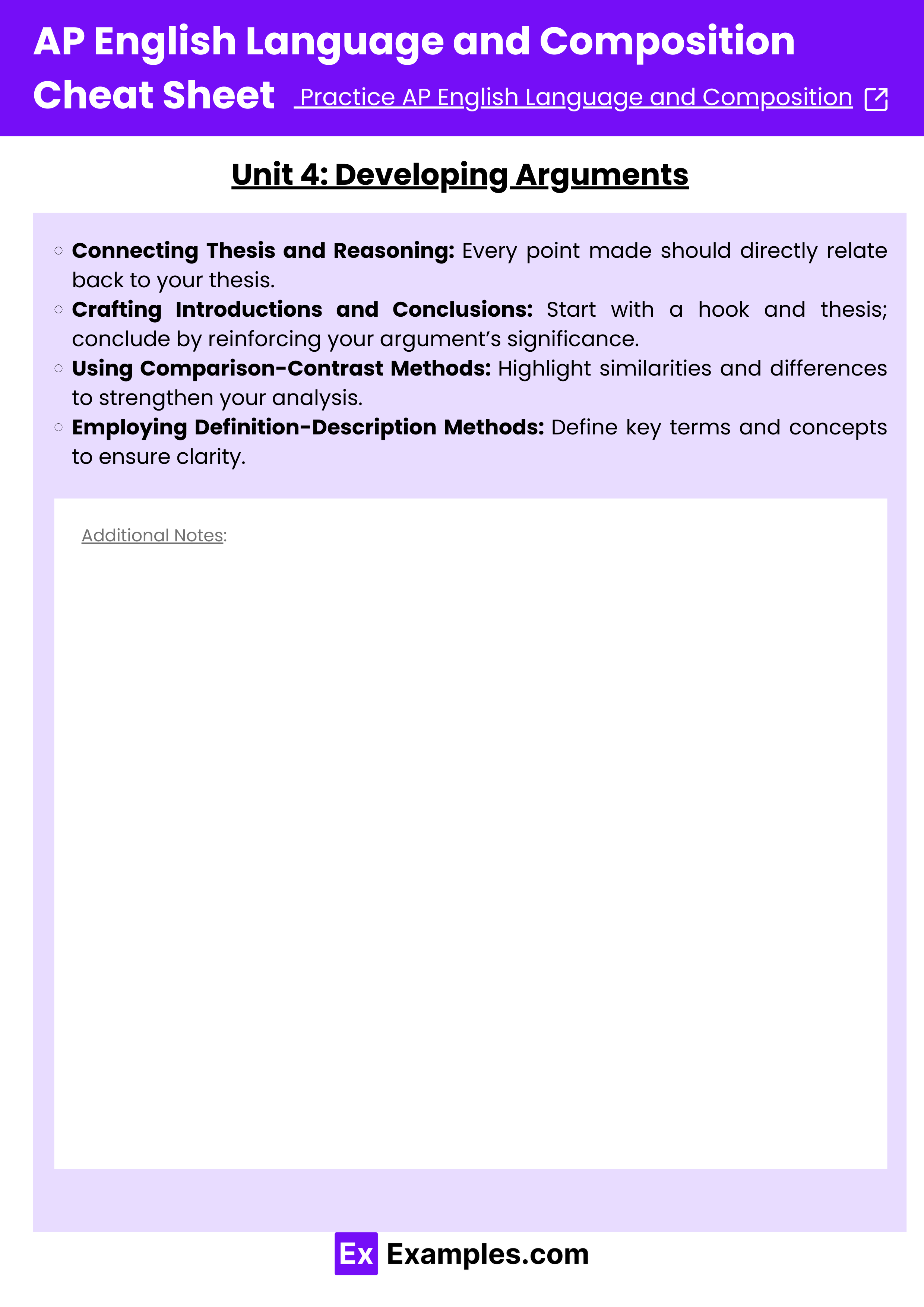
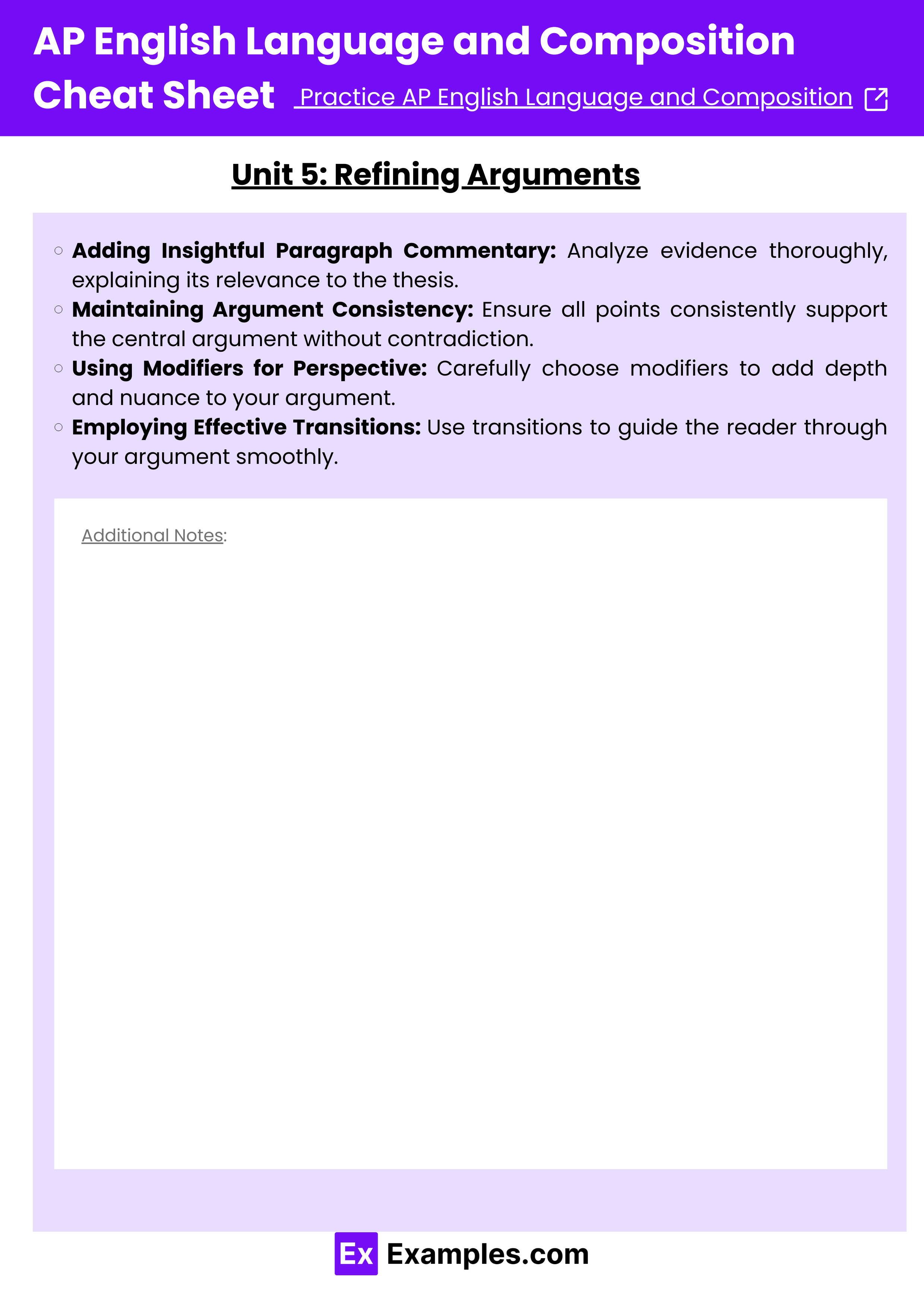

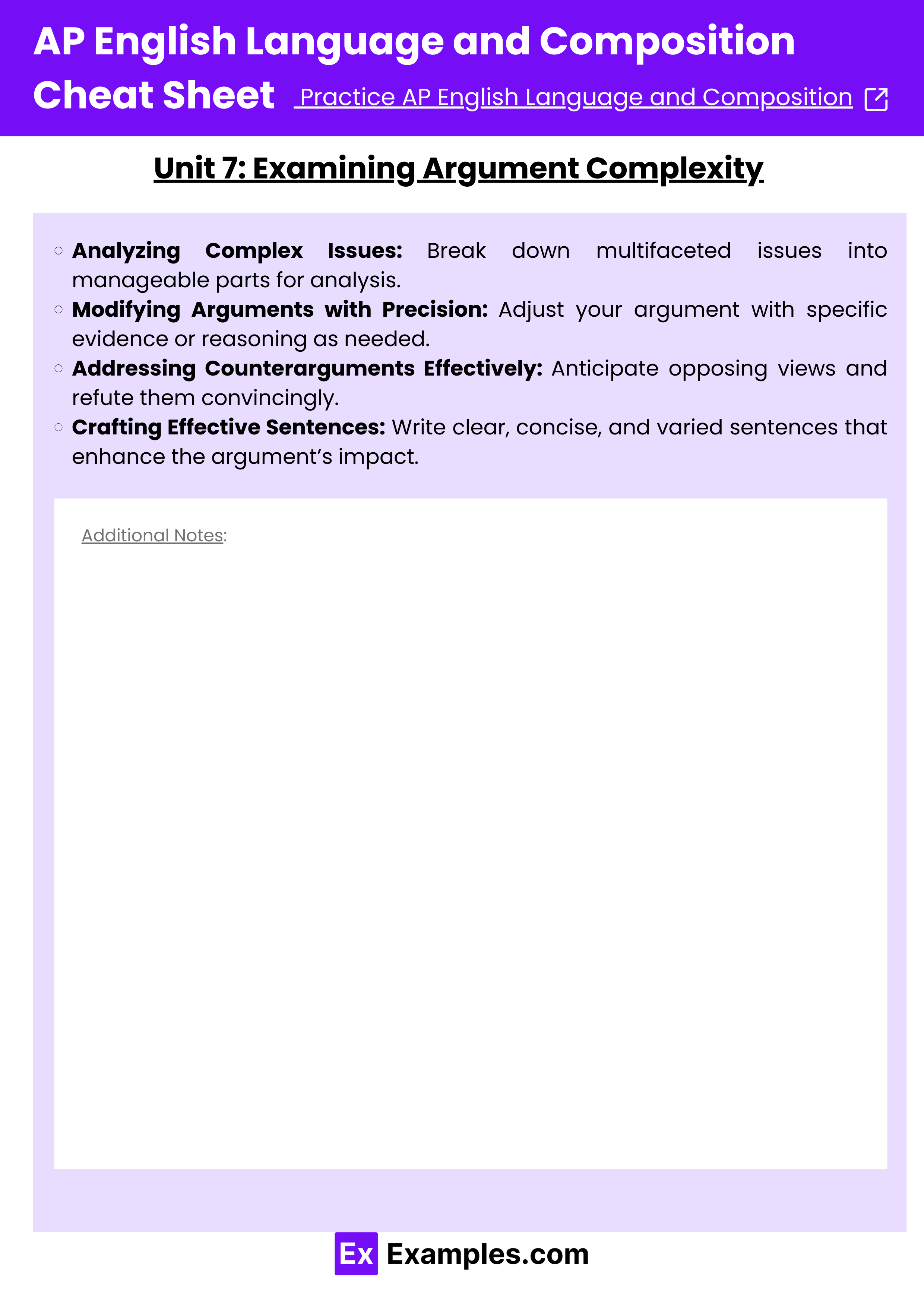

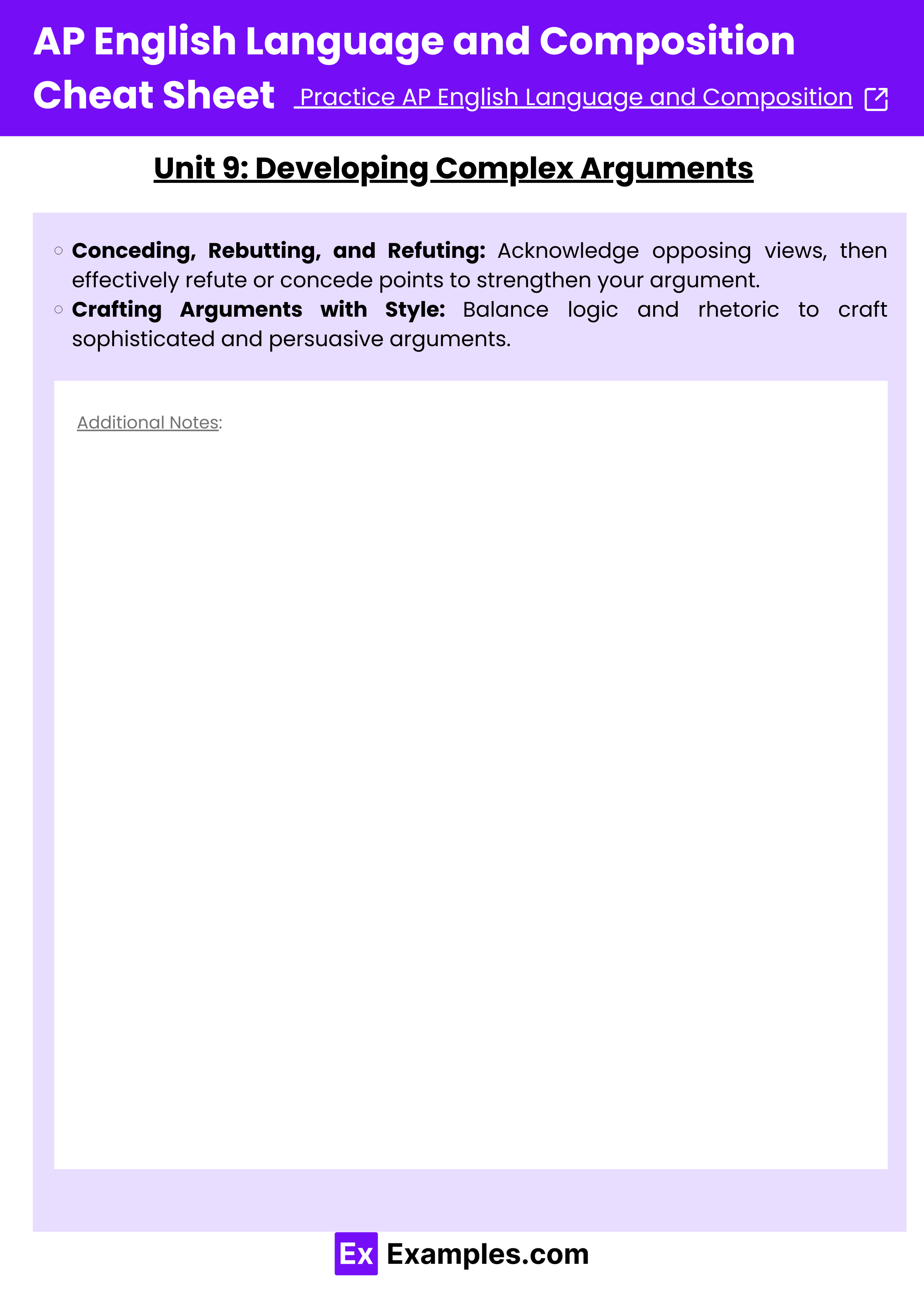
Download AP English Language and Composition Cheat Sheet – Pdf
Unit 1: Identifying and Analyzing Claims
Understanding Purpose and Audience: Determine the author’s intent and target audience to analyze the effectiveness of the argument.
Evaluating Evidence and Claims: Assess the credibility, relevance, and sufficiency of the evidence presented.
Structuring Effective Argument Paragraphs: Begin with a clear topic sentence, provide evidence, and analyze how the evidence supports the claim.
Unit 2: Organizing Information and Evidence
Analyzing Audience Expectations: Tailor arguments to the audience’s values, knowledge, and concerns.
Building Logical Arguments: Ensure each point logically connects to the next, avoiding logical fallacies.
Crafting Clear Thesis Statements: Formulate a concise and arguable thesis that guides the entire essay.
Integrating Evidence Seamlessly: Embed quotes and data smoothly into your text without disrupting the flow.
Unit 3: Exploring Perspectives
Identifying Claims and Reasoning: Recognize the main argument and the logic supporting it.
Avoiding Flawed Reasoning: Stay clear of logical fallacies like hasty generalizations or false dilemmas.
Introducing and Integrating Sources: Introduce sources with appropriate context and integrate them into your argument.
Using Sufficient Evidence: Provide enough evidence to convincingly support each claim.
Accurately Citing References: Follow the proper citation format to give credit and avoid plagiarism.
Applying Cause-Effect and Narrative Methods: Use these methods to clarify the relationships between ideas and enhance argumentation.
Unit 4: Developing Arguments
Connecting Thesis and Reasoning: Every point made should directly relate back to your thesis.
Crafting Introductions and Conclusions: Start with a hook and thesis; conclude by reinforcing your argument’s significance.
Using Comparison-Contrast Methods: Highlight similarities and differences to strengthen your analysis.
Employing Definition-Description Methods: Define key terms and concepts to ensure clarity.
Unit 5: Refining Arguments
Adding Insightful Paragraph Commentary: Analyze evidence thoroughly, explaining its relevance to the thesis.
Maintaining Argument Consistency: Ensure all points consistently support the central argument without contradiction.
Using Modifiers for Perspective: Carefully choose modifiers to add depth and nuance to your argument.
Employing Effective Transitions: Use transitions to guide the reader through your argument smoothly.
Unit 6: Integrating Multiple Perspectives
Incorporating Diverse Viewpoints: Include and fairly represent different perspectives to enrich the argument.
Recognizing and Addressing Bias: Identify any bias in your sources or reasoning and address it to strengthen credibility.
Integrating and Adjusting New Evidence: Adapt your argument as new evidence is introduced, ensuring it remains robust.
Analyzing Tone and Shifts: Pay attention to changes in tone that may affect the argument’s persuasiveness.
Unit 7: Examining Argument Complexity
Analyzing Complex Issues: Break down multifaceted issues into manageable parts for analysis.
Modifying Arguments with Precision: Adjust your argument with specific evidence or reasoning as needed.
Addressing Counterarguments Effectively: Anticipate opposing views and refute them convincingly.
Crafting Effective Sentences: Write clear, concise, and varied sentences that enhance the argument’s impact.
Unit 8: Making Stylistic Choices
Choosing Audience-Based Comparisons: Select comparisons that resonate with your intended audience.
Developing Sentences and Word Choice: Opt for precise language and sentence structure to convey your argument effectively.
Analyzing Argument Choices and Audience: Understand how your rhetorical choices affect the audience’s perception.
Enhancing Arguments with Style: Use stylistic elements like tone, diction, and syntax to strengthen your argument.
Unit 9: Developing Complex Arguments
Conceding, Rebutting, and Refuting: Acknowledge opposing views, then effectively refute or concede points to strengthen your argument.
Crafting Arguments with Style: Balance logic and rhetoric to craft sophisticated and persuasive arguments.

